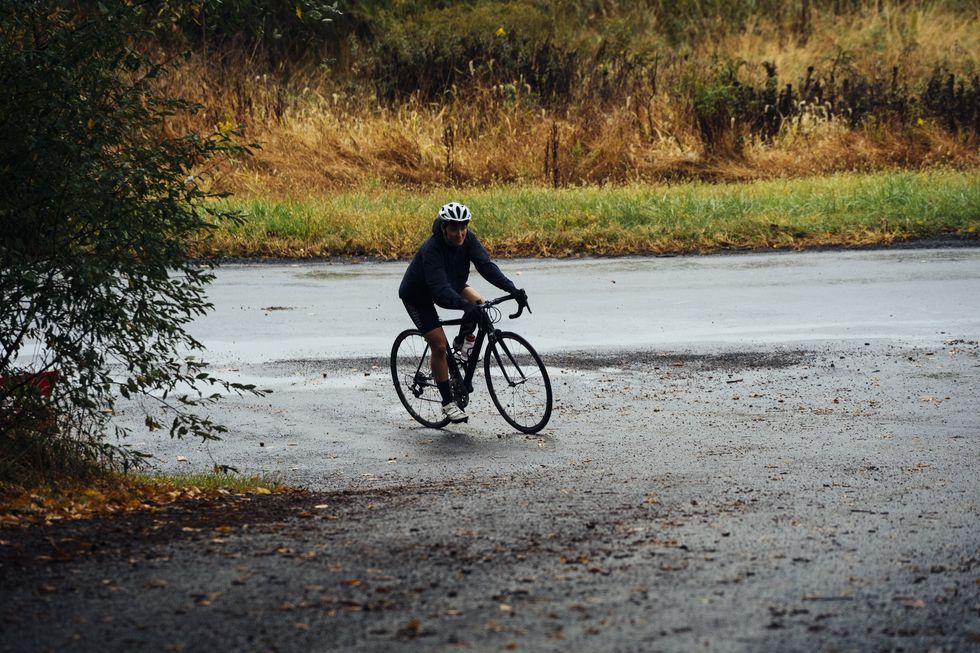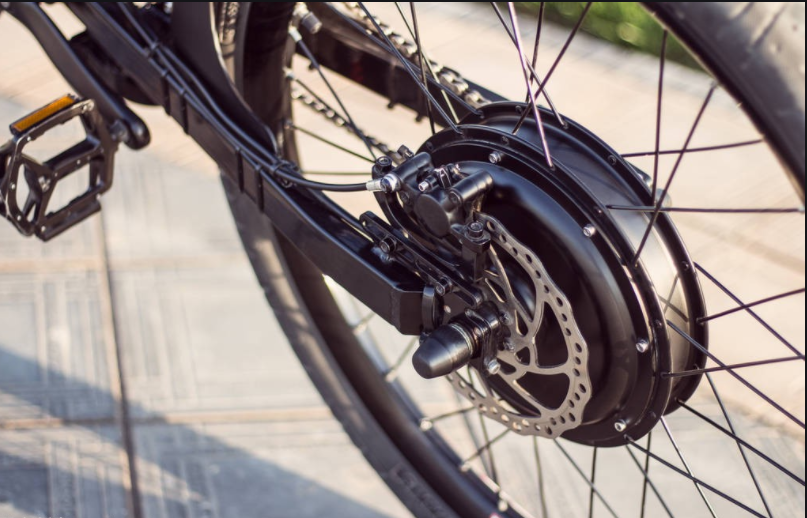Electric bike gear
In a world that focuses on range, motor output, and battery size, the physical elements of electric bicycles are often overlooked. However, shifting and shifting gears are as important for electric bicycles as for ordinary bicycles. Understanding electric bicycle gears may seem basic to some people, but for many novices and veterans, it is often considered unnecessary. After all, you are electric! But the correct use of electric bicycle gears allows riders to maximize their energy output, together with their motors, so that both can last longer and travel longer, and ultimately, riders can have a better experience.
Electric bicycle gears and pedal assist levels are different. Learning how to use electric bicycle gears with pedal assist can help you achieve the smoothest and most energy-efficient riding; for you and the battery.
Knowing how, when, and why shifting gears on an electric bike can increase your confidence in your riding ability and prevent you and your motor from using too much force in a gear that is too high. It can also prevent you from stepping on the pedal violently in a gear that is too low, which consumes excess energy and has nowhere to go. Here, we will discuss everything from gear systems and how they work to e-bike shifting and e-bike riding techniques and best practices in gear management. First, we will introduce the existing electric bicycle gear types.
Types of electric bicycle gears
Before we get into electric bicycle gear shifting, we need to first become familiar with the types of electric bicycle gears available. There are two types of electric bicycle gears on electric bicycles: derailleur gears and hub gears.
Derailleur Gears
The derailleur gear is the most versatile and popular gear system on electric bicycles, and is directly taken from similar products that are manually driven. The derailleur gear system consists of a gear “cassette” connected to the hub of the rear wheel, which is connected to the “sprocket” by a chain, and the pedal is connected to the gear; when it is called a combined unit of pedal and sprocket, it is called “Dental plate”.
The transmission of the derailleur has changed a lot, some have 3 sprockets and 12 gears on the flywheel, providing them with 36 transmission options! Electric bicycles don’t need so many gears. Their flywheel has only one chainring, usually 6-9 gears. The gear drive works in a ratio. In the derailleur gear setting, this depends on the ratio of the number of teeth on the sprocket to the number of teeth on the gear on the rear flywheel; the teeth are spikes connected to the chain. Different use cases, such as commuter bikes and mountain bikes, require different gear ratios for different purposes. For example, commuters want to get off the car quickly and keep up with traffic speed, while mountain bikers want to be able to climb steep, bumpy roads terrain.
The derailleur gear system is named after the derailleur element of the system; it contains two brackets for gears hanging under the tape. This is usually connected to the mechanism on the handlebar via a cable. The handlebar end of the adjustment mechanism will increase or decrease the tension on the cable, thereby moving the derailleur up or down into the gear box, thereby changing the gear.
Transmissions are more popular than other gear mechanisms for the following reasons: Initially, they are much cheaper to purchase, and then they are easier to clean, work and replace than hub gears. The disadvantage of derailleur gears is that they are open to the outside environment and can get dirty, so over time they produce noise and make it more difficult to shift gears. This means they need to be cleaned and maintained, but this can be done easily at home or by a local electric bike store.
Hub gear
The hub gears are completely wrapped in the hub of the rear tire. These hub gears are complex equipment. There are various gears rotating in the small hub. They are still chain-driven. The chain connects the chainring to a single gear on the rear wheel and pushes the power into the gear hub to adjust how the pedal power is transmitted to the wheel.
Hub gears are usually operated by twisting the handle, not the joystick, and unlike the derailleur counterparts, riders can switch gears without problems when stationary, and they can switch multiple gears at once without harming the system.
There are only two gears, one on the pedal and one on the hub of the rear wheel, and there is no gear switching in the derailleur system. The chain and external gears on the hub gear system bear less pressure than the derailleur system; they It can even be belt driven instead of chain driven. This ultimately means that these components have a longer lifespan. Including the fact that the hub is completely enclosed and unaffected by the elements, hub gear seems to be the best choice.
However, hub gears do have their disadvantages. Compared with the corresponding derailleur, they provide a much smaller range of gears and are much less energy efficient, because the large number of moving parts in the hub will generate more friction and consume more energy than in-line derailleurs; Reduce the mileage of electric bicycles. They are also heavier and more expensive than alternatives, and it is much more difficult to remove the wheels to repair the flat surface. Finally, when a wheel hub gear system fails, an expert is required to repair it, which can be a time-consuming and expensive process; plus there are few experts.
Shift mechanism
If you have gears, then you want to use them, and the transmission mechanism allows the rider to do so. Here, we will introduce the shift mechanism that can be used for the derailleur gear. The most popular shifting method in the world of bicycles and electric bicycles is the lever. The lever is located on the handlebar and is operated with the rider’s thumb. They are connected to one end of a cable, or a tube filled with mineral oil (hydraulic system), and when adjusted, it will increase or decrease the tension on the cable, causing it to move up and down on the box. The same function can be achieved by the twist handle on the handlebar, just like a motorcycle accelerator. Hydraulic systems are becoming more and more popular because they do not suffer the same stretch over time and require more adjustments than cable systems.
Electronic methods also exist and claim to be much more accurate, some even claim to be self-calibrating; this means less maintenance. There are some noteworthy electronic shift mechanisms, but they are relatively new to the market and their full potential has yet to be realized.
THE IMPORTANCE OF CADENCE
Before we discuss the tips for making the most of your electric bike, we must first mention the cadence. The cadence in the bicycle world is:
The pedaling cadence of a cyclist, that is, how many revolutions their legs, not the wheels, make in a certain period of time is usually measured in units of one minute, called RPM (revolutions per minute).
The optimal cadence for the average cyclist is determined to be 60 rpm, which makes it easy for the pedal to rotate 1 revolution per second. More importantly, research shows that amateur cyclists rarely benefit from increasing their cadence above the 60 rpm range. These studies and most of the information in the field come from the conventional bicycle world, but riding an electric bicycle does not invalidate these claims. In fact, those electric bicycles that use the pedal assist level may want to use 60rpm as their limit unless they want to use their body to propel themselves.
EBIKE shifting and EBIKE riding tips and best practices
It is not difficult to become a more energy-efficient rider, once you notice the details of a few rides, it will soon become second nature to you!
Compared with riding an ordinary bicycle, riding an electric bicycle requires balancing the electric power assist with the bicycle’s mechanical transmission and your body input. The proportion of how all these factors work together varies from person to person, and everyone will find their own balance between them and their electric bikes. The following 10 tips and best practices complement this balance between your riding and ability.
1. Aim to keep your cadence at around the recommended 60 rpm.
2. Adjust the position of your gear and pedal assist shifter on the handlebars so that they are in the most comfortable position when you ride. After adjusting them and before riding, make sure to “stress test” them by rotating the handlebars to the far left and right. If during this stress test, if the cables are strained, you should readjust the shifters so that they will not strain. This will prevent costly damage from occurring.
3. Large changes adjust the pedal boost level, small changes adjust the mechanical gear. In other words, compared with mechanical gears, increasing or decreasing the pedal assist level has a much greater impact on your power and rhythm.
4. When the mechanical gear is switched, continue to pedal steadily. This helps to ensure smooth and easy transitions between gears. Your motor may pause when you change gears, but this is normal and is set up to protect the drivetrain.
5. Predict the terrain ahead of you and change your gear and pedal assist level to suit the situation ahead. For example, when approaching an uphill section, riders can put down two gears and increase their pedal assist level; when approaching a downhill, Riders can put down their pedal assist device, possibly turn it off completely, and then move up one or two gears.
6. If in doubt, please keep a lower gear. It is difficult to switch when you need it most, but it is much easier to switch.
7. When parking, turn down the level of pedal assistance until it turns off, and then turn it down through mechanical gears. Starting from this lower gear, it is easier to take off from a stationary state and reduce the pressure on the brakes when parking.
8. Do not change gears when stationary. Unfortunately, if you are in the wrong gear when you arrive at the station, unfortunately, you must take off from that gear. Doing this for enough time will make you remember to change it in advance.
9. Don’t change multiple gears at once. Wait for each gear to be fully engaged before shifting to the next gear.
10. Higher levels of pedal assist require higher gears. All gears can use all levels of pedal assist. However, in order to optimize your power output, please increase the level of mechanical gears while increasing the level of pedal assist.
The last sentence
How to shift gears on an electric bicycle is a common problem and is often confused with optimizing gear shifts on an electric bicycle. Now that you know the working principle of the electric bicycle gear system, the advantages and disadvantages of each system, and how to optimize your riding for energy consumption and battery, you can sit on the saddle and relax, knowing that you are making the most of your The wonderful smooth ride underneath.
Our factory provide OEM and ODM,if you are interested in our electric bike, you can log on our official website to know more about details. If you have any query or electric bicycle transportation problem,please feel free to contact us and we will contact you APSAP. https://gzdlsdz.en.alibaba.com/
Please Leave us an inquiry.
 Shuangye ebike
Shuangye ebike


